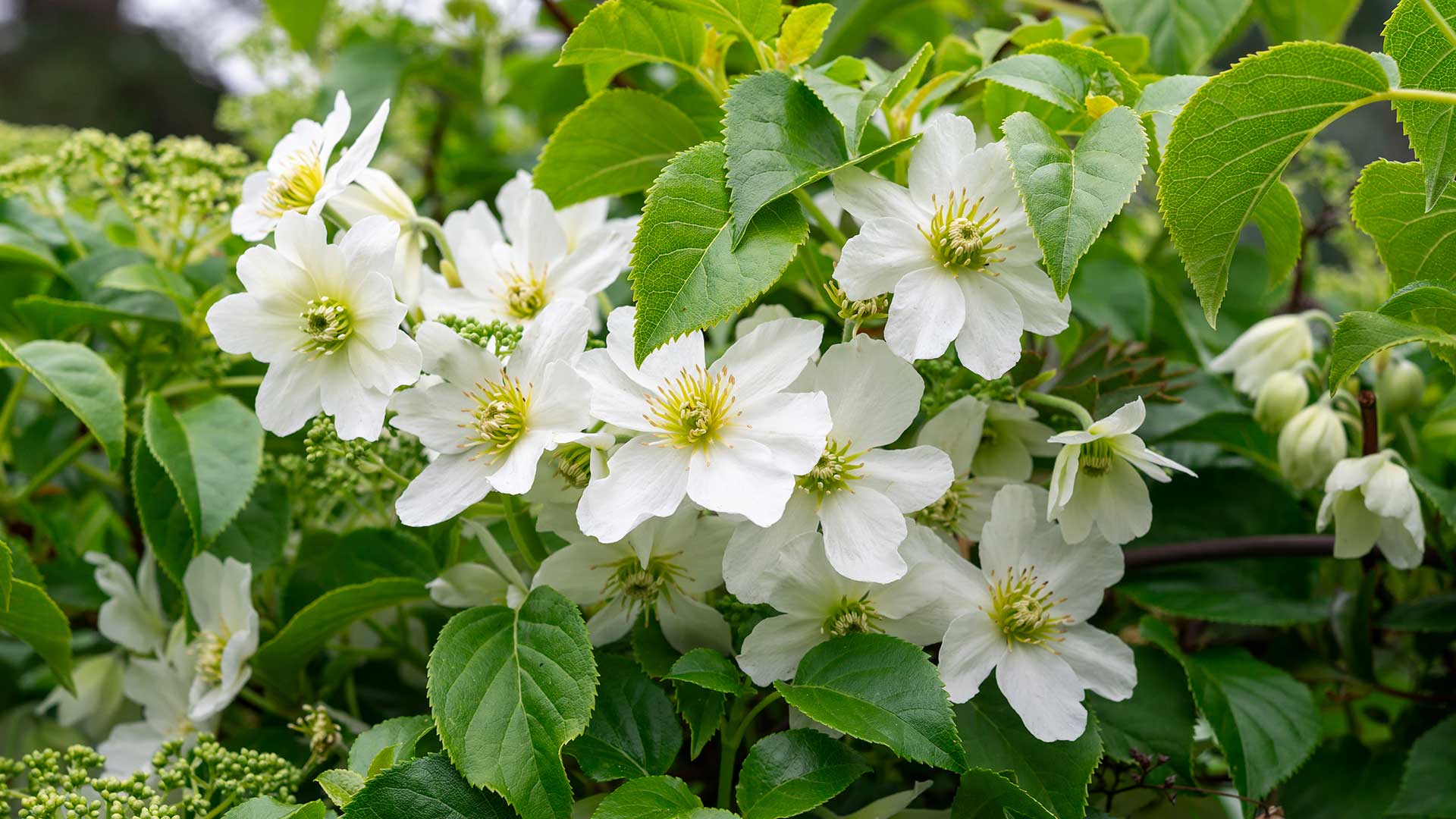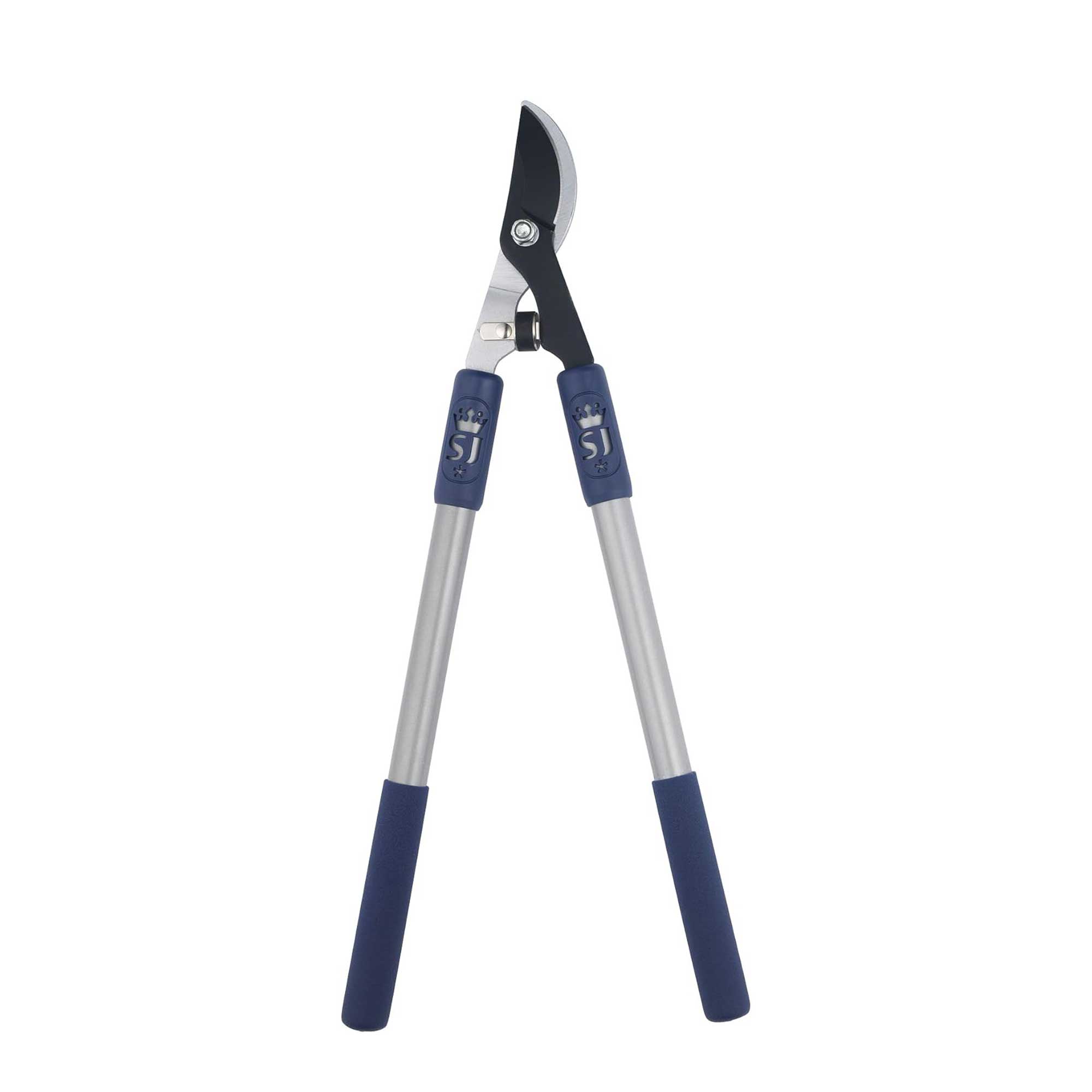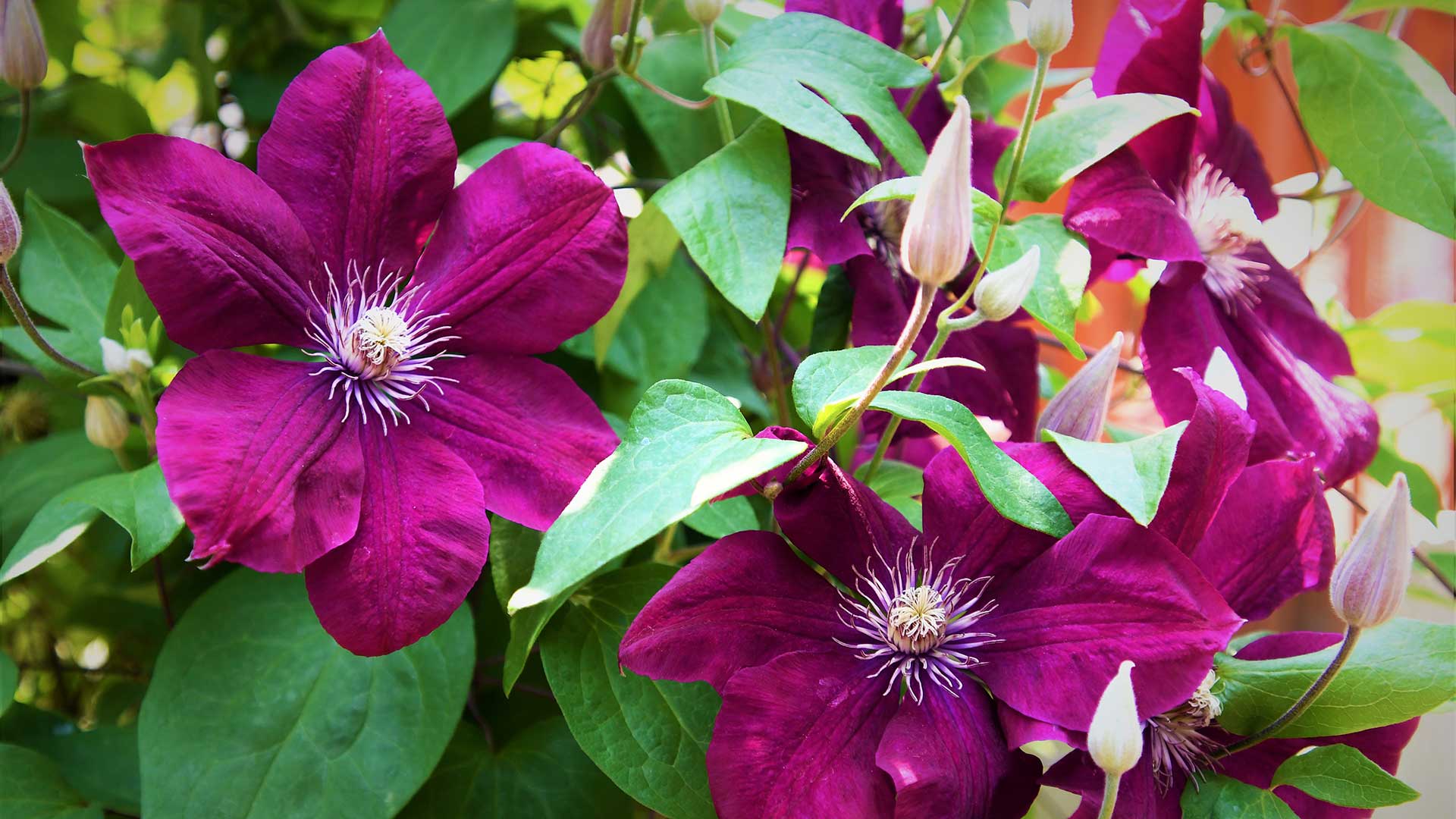
Learning how to prune clematis will come in handy when growing these vining, flowering plants. They're a favourite for screening walls and fences, but to keep them tidy, they benefit from a trim.
Just like learning how to prune roses correctly, cutting back clematis in the right way will reward you with better blooms. Plus, it'll lead to healthier plants that are a more suitable size for your outdoor space.
With help from the gardening experts, we've put together all the essentials in this practical guide, including advice on what time of year to prune your plant. Whether you're growing your clematis as part of a cottage garden or following more modern garden trends, these tips will help it look its best.
How to prune clematis, according to the experts
Harriet Worsley, the managing director at Worsley Design & Consultancy, says, "Pruning is all about putting the energy back into the plant, at the right time, to manipulate the growth to ensure magnificent flowers follow." It's an important step in helping your best plants flourish.
What you will need
Whatever garden job you're taking on, whether it's getting rid of moss in your lawn, cleaning a patio, or trimming a hedge, it's worth investing in the proper tools.
Tim Marshall, the head gardener at Raby Castle, highlights how using the right tools to prune clematis is essential for making clean cuts without damaging the plant.
"A sharp pair of pruning shears or secateurs is a must for cutting through stems of varying thickness," he says. A pair of loppers may also come in handy, as will a pair of sturdy gardening gloves.

RRP: £20.03 | These pretty gloves, with adjustable wrist straps and touch-screen-compatible fingertips, are ideal for protecting your hands.

RRP: £20.97 | These best-selling secateurs feature ergonomically designed handles and a sharp steel blade. A must-have tool.

RRP: £25.38 | For taller and tougher stems, try these high-quality bypass loppers which have comfortable grips and a rust-resistant steel blade.
When to prune clematis
"Knowing when to prune your clematis is crucial, as different types require different pruning times to ensure optimal growth and flowering," says Tim. "Generally, clematis are divided into three main groups based on their flowering season."
Group 1 are the early-flowering clematis, including winter-flowering clematis. These should be pruned immediately after flowering, typically in late spring or early summer, Tim says.
Of the clematis varieties that Harriet plants for her clients, group 1 types include Clematis montana and Clematis macropetala ("these are gorgeous"), she says. "Then there are the Clematis cirrhosa and the big evergreen Clematis armandii that I don’t use so much."
Group 2 are the large-flowered clematis, like "Nelly Moser", that bloom in early summer on the previous year's growth, Tim notes.
These are plants to prune in February. If you prune them again after flowering, you might be rewarded with another flush of flowers later in the summer, says Harriet.

Finally, there's group 3, which are the late-flowering types of clematis, including Clematis viticella, Tim says. These bloom on new growth produced in the current season, he adds. "Prune these clematis hard in late winter or early spring to encourage vigorous growth and abundant flowering." Some gardeners prune these plants in January.
A step-by-step guide on how to prune clematis

Pruning clematis only takes a few steps. Just ensure you know which group your plant is in before you get started.
1. Prepare your tools
The first thing you need to do when pruning any plant is to get your tools ready. Whether you're using secateurs, loppers, or a bit of both, they should be sharp and clean. This will prevent the risk of passing pathogens onto your precious plants.
You can use a disinfectant, such as Jeyes fluid, available from Amazon. As the Royal Horticultural Society (the RHS) advises, leave it on the blades for 15 to 20 minutes before wiping it off.
2. Get snipping
Once your tools are ready, it's time to start cutting your clematis. An important gardening tip to note here is that the right technique depends on the type of clematis you have...
- Group 1: "For group 1 pruning, cut out any dead or diseased stems, and any straggling tendrils, and cut the stems back to a good pair of buds," says Harriet. Pruning is not absolutely essential for these plants, she says – but they need to be kept in check in terms of growth, particularly the Montana and Armandii varieties that are vigorous and get enormous. "The pruning for these is really to ensure they don’t take over. "You shouldn’t cut into the main woody stems if they are established," Harriet continues. "However, for very young, newly-planted clematis in this group, we cut them right back to around 30cm from the ground after flowering, to help them establish stronger multiple leading stems. It feels a bit frightening to do this, but the shoots will emerge."
- Group 2: When pruning group 2, Harriet says to cut away the dead and diseased lateral stems, to above a set of good buds. "Don’t cut into the main stem – cut the offshoots." After flowering, you can cut the stems again – below the flowers, but just above a set of buds, she says.
- Group 3: This type of clematis needs to be cut right back to 30cm from the ground level, Harriet advises. "Make sure the cut is above some strong buds. It feels brutal, but you will be rewarded." You will only get flowers on the top section if you don’t prune, she adds.
3. Provide proper care afterwards
Clematis benefit from a layer of mulch to retain moisture and help keep the soil cool. So, once you've finished pruning, consider adding some compost or bark chippings around the base of your plant.
Remember to water them during hot, dry periods, too, to encourage healthy growth.

FAQs
How do I know which group my clematis is in?
"To determine which group your clematis belongs to, observe its flowering time and habit," says Tim.
"If in doubt, ask the nursery, refer to the RHS or look online to find out which group your clematis falls under," suggests Mark Lane, a gardening expert.
What happens if you prune a clematis at the wrong time?
"Pruning clematis at the wrong time can result in reduced or delayed flowering," says Tim. "For example, pruning a group 2 clematis too late in the season may remove the flower buds forming on the old wood, resulting in fewer blooms."
Just like making lawn care mistakes, you can chalk it up as a learning curve.
"If you prune at the wrong time, take note in a gardener’s diary and prune at the right time the following year," Mark says. "You may forego flowers that year, but the following year you will have a clematis that is the envy of all your neighbours."
How do you prune a neglected clematis?
"If a clematis has become unruly, pruning has been neglected, or you have inherited an overgrown clematis when buying or renting a new home, then you can carry out some regenerative pruning after flowering," Mark says.
He recommends cutting it back to around 10–15cm above ground level. It is advisable not to carry out such regenerative pruning again until a minimum of three years later, he says.
Once you've worked out what group yours is in, learning how to prune clematis is easy – and you can enjoy plenty of blooms year after year.







